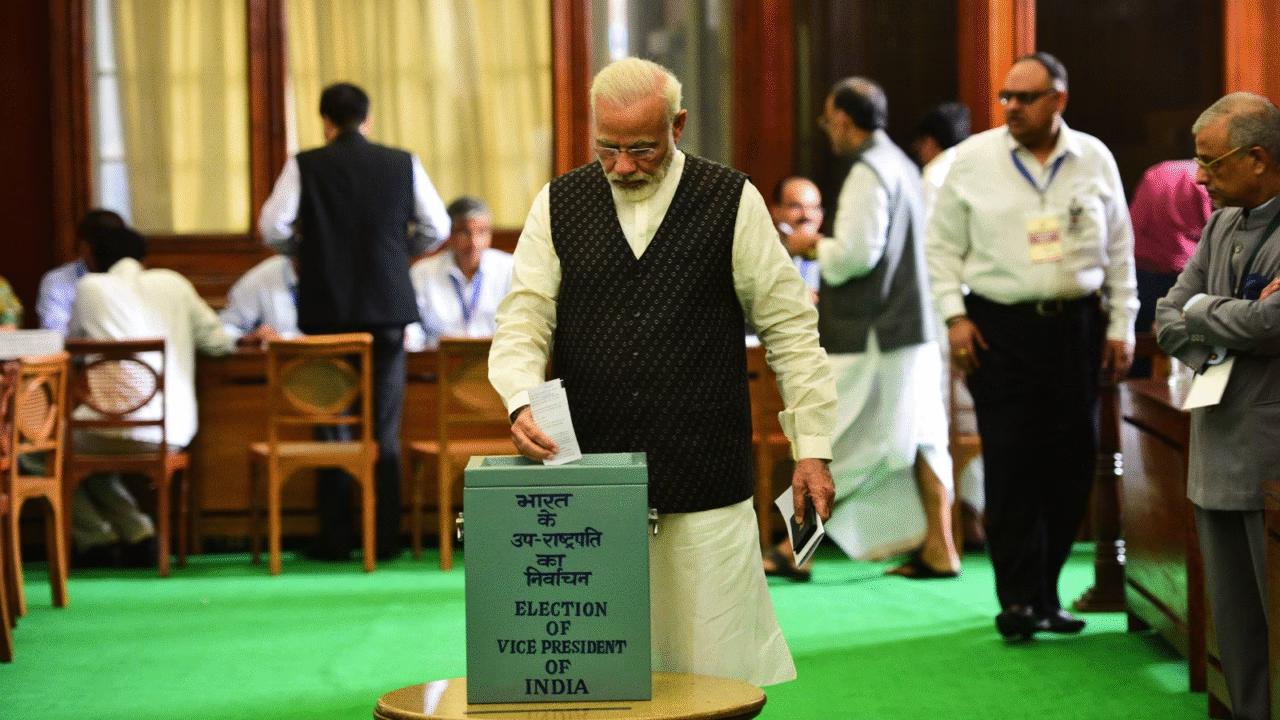The preparations are underway for one of the most closely monitored political battles of the year as India gears up to elect its next Vice President on September 9, 2025. With the term of the current Vice President, Jagdeep Dhankhar, approaching its conclusion, the contest for the second-highest constitutional office has already ignited discussions throughout political and parliamentary circles.
The Vice President of India plays a vital role, serving not only as the second-in-command to the President but also as the Chairperson of the Rajya Sabha, where balancing competing interests is both a challenge and an art form. With intense discussions surrounding economic reforms, social policies, and foreign relations dominating the Upper House, the choice of Dhankhar’s successor will significantly influence India’s parliamentary dynamics.
Electoral Procedure
In contrast to general elections, the Vice President is elected by an electoral college consisting exclusively of members from both Houses of Parliament. This includes 543 Lok Sabha MPs and 245 Rajya Sabha MPs, totaling 788 votes. Each vote holds equal significance, and the candidate who achieves a simple majority is declared the victor. The Election Commission of India will supervise the election process, with results anticipated to be revealed on the same day.
The Implications
This election occurs at a moment when India’s political environment is highly polarized. The ruling National Democratic Alliance (NDA) is eager to maintain its grip on the Vice Presidency, facilitating smoother legislative processes in the Rajya Sabha. Conversely, the opposition coalition, which has strengthened its position in recent months, is resolute in presenting a formidable challenge, framing the vote as a measure of unity and significance.
Observers have remarked that the role of the Vice President is frequently undervalued, yet it wields considerable influence. From making decisions on contentious procedural issues in the Rajya Sabha to representing the President when necessary, this office has historically played a crucial role during times of crisis. Figures such as S. Radhakrishnan, Sarvepalli Venkatraman, and Hamid Ansari have made enduring contributions to the position.
Potential Contenders
Although official candidates have not yet been disclosed, there is much speculation. The NDA is expected to nominate a candidate with substantial parliamentary experience and a commitment to the government’s legislative priorities. Conversely, the opposition may choose a leader who can foster consensus and unite various parties under a single banner. Given the increasing political importance of southern and eastern India, candidates from these areas are also being considered.
Why It Matters
This election transcends merely filling a constitutional position; it concerns who will guide India’s democratic discussions during a politically charged period. With significant reforms on the horizon, including those related to energy, social welfare, and foreign trade, the next Vice President’s involvement in directing Rajya Sabha debates will be vital.
As September 9 draws near, the competition is set to be filled with both political intrigue and constitutional importance. One thing is certain: all attention is focused on who will take over from Jagdeep Dhankhar.

